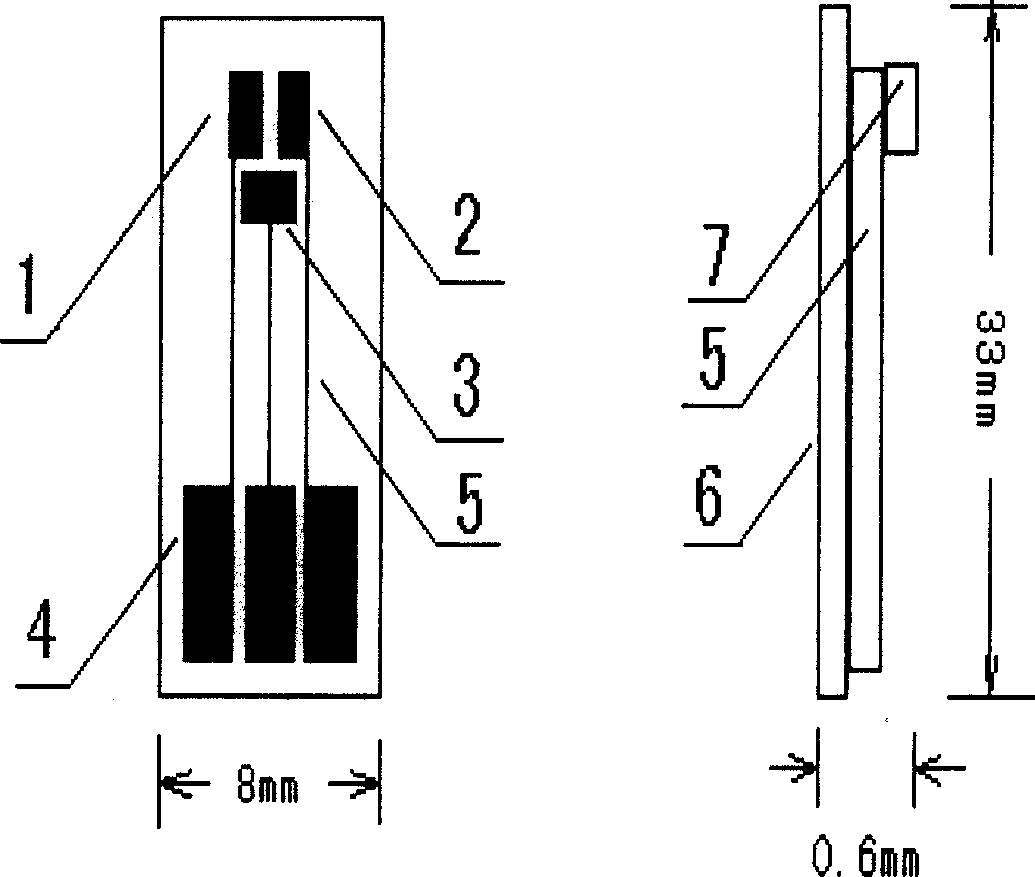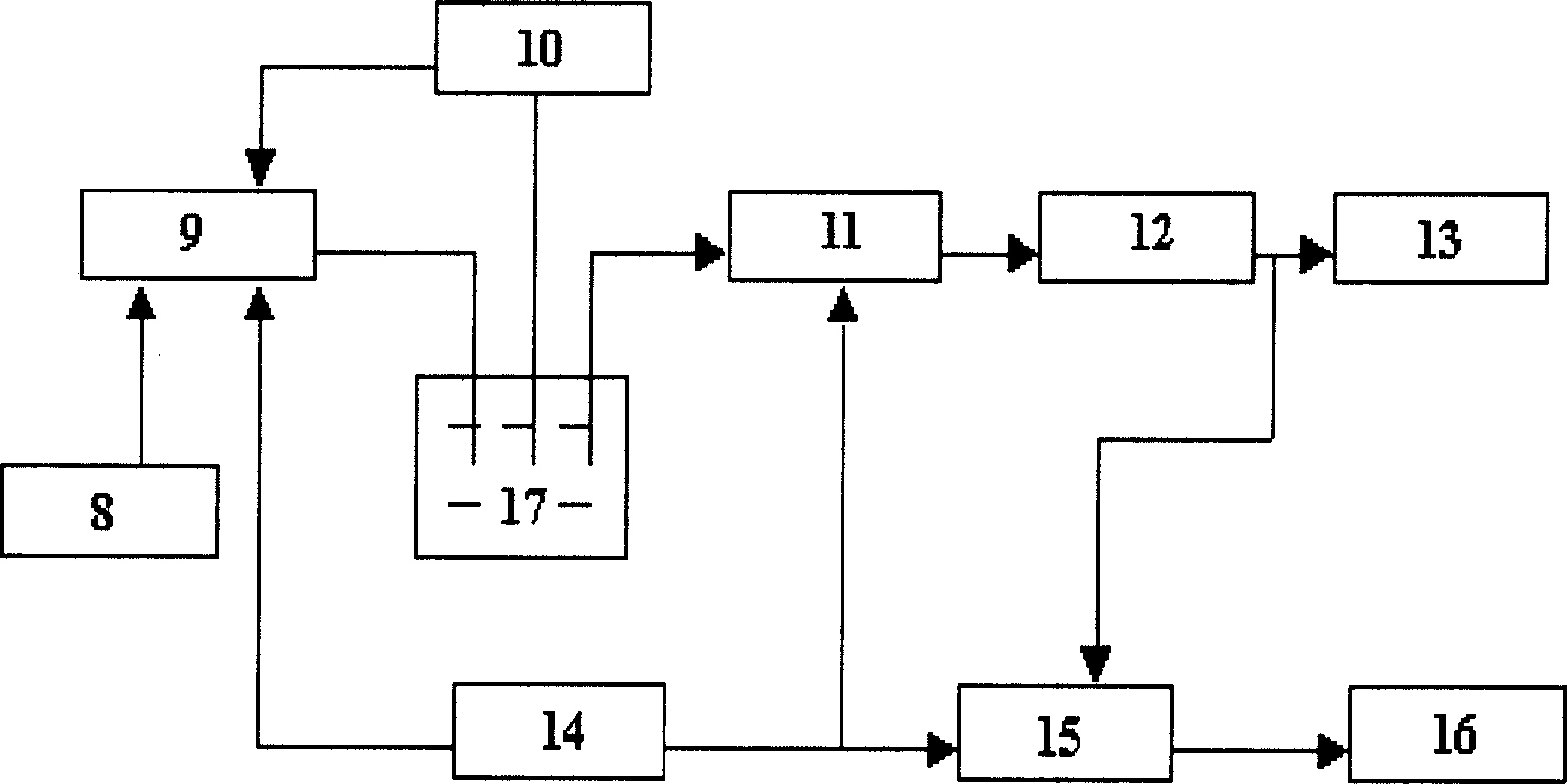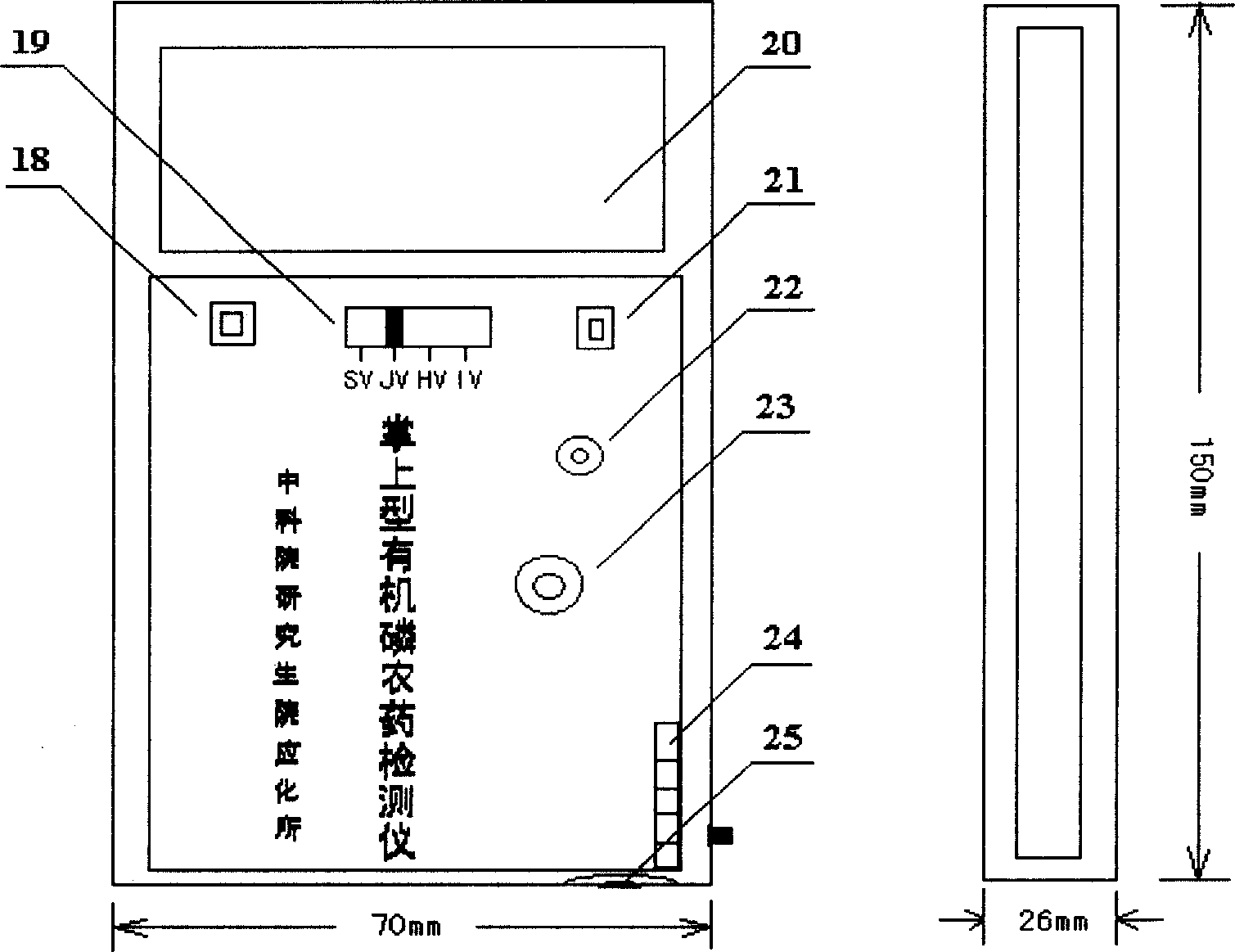Process for making nano-modification minisize electrochemical biosensor for pesticide detection
A biosensor and pesticide residue detection technology, applied in the field of handheld organophosphorus pesticide detectors, can solve the problems of difficult constant measurement of potential, low detection sensitivity, small size, etc., and achieve easy on-site testing, high sensitivity, and low design cost. Effect
- Summary
- Abstract
- Description
- Claims
- Application Information
AI Technical Summary
Problems solved by technology
Method used
Image
Examples
Embodiment Construction
[0026] The printing process can be divided into several steps according to the complexity of the printed electrodes. Take the simplest three-electrode printed by us as an example. After each step of printing, it must be heated and dried in an oven for more than 24 hours before proceeding. What to do next. After all printing is completed, dry in the oven for 48 hours, and the electrodes can be used after cutting
[0027] 1. The first step is to print conductive silver paste on the substrate (6) to make the connection part (4) and wire (5) with the instrument;
[0028] 2. The second step is to print a silver-silver chloride (Ag / AgCl) layer to make a reference electrode (3).
[0029] 3. The third step is to print the conductive carbon paste to make the working electrode (1) and the counter electrode (2)
[0030] 4. The fourth step is to prepare the nanomaterial enzyme electrode (7)
[0031] 5. After the instrument is turned on and stabilized for 10 minutes, it will be tested; ...
PUM
 Login to View More
Login to View More Abstract
Description
Claims
Application Information
 Login to View More
Login to View More - R&D
- Intellectual Property
- Life Sciences
- Materials
- Tech Scout
- Unparalleled Data Quality
- Higher Quality Content
- 60% Fewer Hallucinations
Browse by: Latest US Patents, China's latest patents, Technical Efficacy Thesaurus, Application Domain, Technology Topic, Popular Technical Reports.
© 2025 PatSnap. All rights reserved.Legal|Privacy policy|Modern Slavery Act Transparency Statement|Sitemap|About US| Contact US: help@patsnap.com



